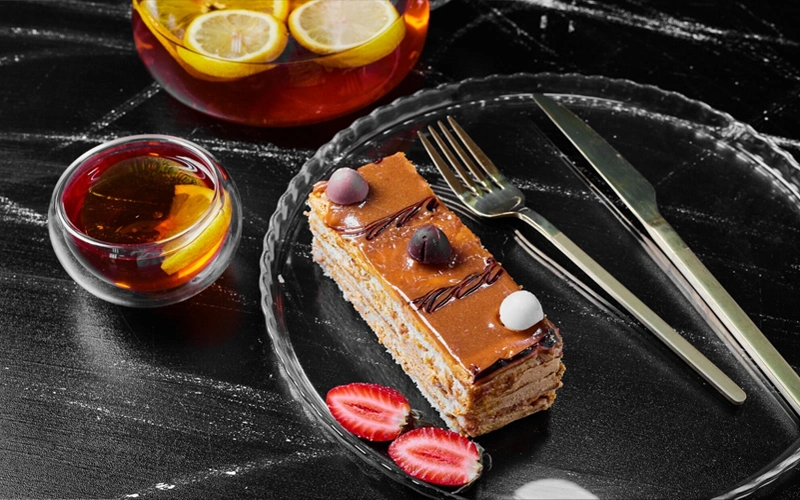

Top Health Benefits of Mille-feuille You Need to Know
Mille-feuille, or Napoleon cake, is a rich and indulgent dessert that combines the flaky goodness of puff pastry with the creamy texture of custard. Although it is a calorie-dense treat, it offers a small source of essential nutrients. The puff pastry is made from butter and flour, providing a good amount of carbohydrates and fats, especially saturated fats from the butter. The custard filling, which contains eggs and milk, contributes valuable protein, calcium, and vitamins like vitamin D. The dessert also contains sugars from both the pastry and custard, making it a high-sugar option. While it's not a health food, its nutritional content can offer a satisfying energy boost when consumed in moderation. However, due to its high sugar and fat content, it is best enjoyed occasionally rather than as a daily treat.
Recipe :
For 4 people
Enjoy your crispy and creamy Napoleon Cake!
When preparing Mille-feuille, several key factors must be considered to ensure the perfect outcome. First, the puff pastry dough requires proper handling to achieve the desired flaky texture. It’s crucial to keep the dough cold at all times while layering the butter, as this prevents the butter from melting too early and ensures the puff layers form properly when baked. Be sure to roll the dough evenly to achieve uniform layers. While assembling the cake, allow the pastry layers to cool before applying the custard filling, as this helps to maintain their crispiness. Additionally, it's important to let the assembled cake rest in the fridge for at least two hours to allow the flavors to meld and the custard to set. Finally, when slicing the finished dessert, use a sharp knife to prevent squishing the delicate layers. Patience and attention to detail during preparation are key to achieving the perfect Mille-feuille.

Mille-feuille is not a suitable dessert for individuals on low-calorie, low-fat, or low-sugar diets due to its high content of butter, sugar, and refined flour. Those following ketogenic or paleo diets, which prioritize low carbohydrate and high fat intake, may also find this dessert unsuitable because of its significant carbohydrate load from both the puff pastry and the custard. Additionally, people with lactose intolerance or dairy allergies should avoid this dish or seek dairy-free alternatives for the custard filling. On the other hand, Mille-feuille can be enjoyed in moderation by those following a balanced diet, especially if they don't have specific dietary restrictions. For individuals seeking a treat that provides some protein and calcium, the custard filling can offer these benefits, although the high sugar content should be considered. For those aiming to indulge occasionally, this classic French dessert can fit into a variety of diets if portion sizes are controlled.
...